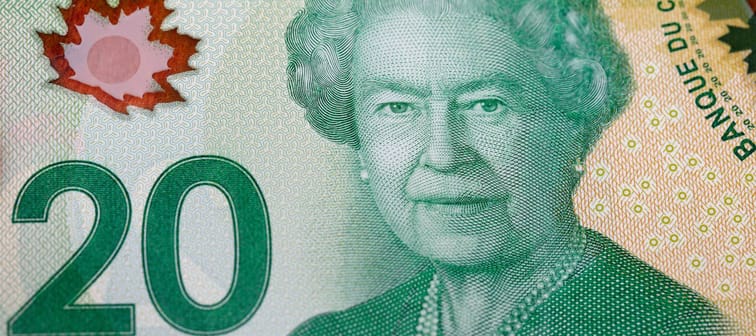Will the face of Canada's currency change?
Any changes to the effigy on coins or bills is at the discretion of the Government of Canada.
The Queen first appeared on the $20 in 1935, then as eight-year-old Princess Elizabeth, with many variations and effigies appearing on the bank note since. The most recent version, released in 2015 was issued to celebrate the milestone of longest-reigning sovereign in Canada’s modern era. At this point, there’s no plans, or rush, to pull the current bills from circulation.
“The current polymer $20 bank note is intended to circulate for years to come,” noted a representative of the Bank of Canada via email. Presently, the polymer notes in circulation last 3.5 times longer than earlier paper notes, so there will be fewer bills printed in coming years. Because of this, there will be no need to change the face of them any time soon.
Alex Reeves, senior manager of public affairs for the Royal Canadian Mint, states via email that “the Government of Canada has exclusive jurisdiction over the design of Canadian coins.” He adds that “there is no legal requirement to change existing circulation coins.”
The Mint has previously held competitions with artists for new effigies, but the Royal Family had the final sign off on the designs for them to be put into circulation.
WIth there being no legal requirement to change the effigy on coins and bills, it is understandable that any revisions will be made based on careful economic consideration.
Invest in real estate without the headache of being a landlord
Imagine owning a portfolio of thousands of well-managed single family rentals or a collection of cutting-edge industrial warehouses. You can now gain access to a $1B portfolio of income-producing real estate assets designed to deliver long-term growth from the comforts of your couch.
The best part? You don’t have to be a millionaire and can start investing in minutes.
Learn MoreThe cost of change
The cost of the current Canadian polymer $20 bill is approximately 23 cents per unit. According to the BoC, this is about double that of the previous series of paper notes.
Presently, there are about 1.05 billion $20 Canadian bills in circulation, totalling close to $21.1 billion.
Despite the additional cost of printing polymer bills, their longer lifespan makes the change from paper currency a more economical one. The timeline for coins to change is also unknown, but the Mint manufacures 1 billion circulation coins per year in their facility in Winnipeg, Manitoba.
With the current bills and coins having a long lifespan, and individuals relying more and more on debit and credit cards, there appears to be no need to rush out and issue new bills.
“There is no legislative requirement to change the design within a prescribed period when the monarch changes,” according to the Bank of Canada representative. Reeves also adds that “The coinage needs of business and consumers will continue to be met without interruption.”
While nations mourn the loss of the Queen of England, her effigy will undoubtedly continue to live on the face of Canadian currency for some time to come.
What to read next
- With interest rates rising, now might be the time to finally tap into your home equity for cash
- A TikToker paid off $17,000 in credit card debt by 'cash stuffing' — can it work for you?
- Mitt Romney says a billionaire tax will trigger demand for these two physical assets — get in now before the super-rich swarm
The richest 1% use an advisor. Do you?
Wealthy people know that having money is not the same as being good with money. Advisor.com can help you shape your financial future and connect with expert guidance . A trusted advisor helps you make smart choices about investments, retirement savings, and tax planning.
Try it now







